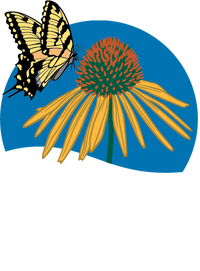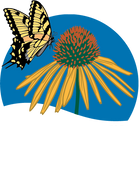
Corylus cornuta - beaked hazelnut

![]()
DESCRIPTION
beaked hazelnut
Corylus cornuta
- Plant listed for information only. Not currently being sold at Garden Centers
The male catkins appear in winter, an early reminder that spring is on its way. The reddish female flowers are quite small in comparison to the catkins but never the less develop into edible hazelnuts. The nuts are an important food source for a wide array of wildlife. This species likes partial shade with some soil moisture. It makes an excellent choice for re-vegetating a stream bank during a restoration project. Studies at OSU have determined that the native beaked hazelnut is not susceptible to eastern filbert blight.
Benefits
- Attracts butterflies, host plant for the early hairstreak butterfly
- Favorite food of grouse, pheasant, woodpecker and blue jay
- Spring catkins are a protein source for grouse and American woodcock
- Squirrels and chipmunks love the protein and fat rich nuts
- Edible nuts are delicious fresh or cooked
NATIVE INFO
Native Range
Found in upland forests and thickets.

Native range derived from The Biota of North America
INTERESTING FACTS
Native Americans gathered the nuts in early autumn and ate them raw or roasted. They were also pounded into cakes with berries, meat, or animal fat. The nut's milk was used to cure coughs and colds, to heal cuts, and as an astringent. The wood was fashioned into arrows, fishing traps, hooks, and spoons.
GROWING TIPS
Grows well in moist to dry, well-drained soil in part to full shade. It may be pruned at any time.
Mature Size: 6-12ft. Tall x 6-12ft. Wide
Hardiness Zone: 4-8
Sun Exposure: Part Shade
VIDEO
Coming Soon!
American Beauties Offer Solution Based Plant Collections to Help you Choose
Quick Tips for Choosing Plants:
- Planting a variety of native trees, shrubs, perennials and vines increases biodiversity and gives wildlife a source for food, cover and nesting
- Choose a mixture of deciduous and evergreen trees so birds and other wildlife will always be able to find shelter
- Plant trees and large shrubs where they will block winter winds from the house and shade it in summer, that will save energy and lower your carbon footprint
- Try your best to buy plants that were grown locally, your independent garden center will be your best bet
- Think about ultimate height and width of the plant you choose, make sure it will fit the space you have for it when it's reached maturity
- Plant nectar plants in groups, to attract butterflies and other beneficial insects more easily
- Ask for help if you need it. Most garden centers either have a landscape designer on staff or they can give you a reference of a designer that is adept at native plant wildlife gardening. There will be upfront costs but they are small when compared to having to redo a landscape that wasn't what you really wanted
Our Plant Tags Hold the Secrets to Success
Choosing the right plants for your garden can seem like a daunting task but we’re here to help. Our horticulturists have spent a considerable amount of time researching and writing our beautiful, American Beauties plant tags to help you be successful. First of all, when you see an American Beauties branded pot at your garden center you can be confident that the plant is native to your area and a responsible choice.
When you look at our tag you’ll find information about the plants natural habitat. That will give you a clue to how it will work in your backyard. For instance if the plant is naturally founded and moist, shade and you have full sun, it’s not the plant for you. The “Features” section gives you an overview or plant description so you’ll know what to expect. While the “Benefits” section talks about the plants strong suits and how the plant will benefit wildlife.
A Special Note About Exposure
Full sun: Prefers six or more hours of direct sunshine a day
Partial shade: Thrives in three to six hours of daily sunshine
Shade: Generally does well with less than three hours of sun per day. Having said that even shade loving plants will struggle in extremely deep shade.
DOWNLOADABLE RESOURCES
Best Plants for Bees - Double sided printout for download
Best Plants for Butterflies - Double sided printout for download



